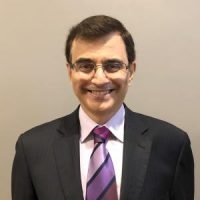Articles / Aortic Stenosis – Are you missing it?

Cardiovascular diseases have become a leading cause of morbidity and mortality worldwide. Among these conditions, aortic stenosis has emerged as one requiring GPs’ urgent attention due to its increasing prevalence and the high number of cases going unrecognised in the community.
GPs play a crucial role in establishing early diagnosis of this often silent threat, and timely interventions ultimately save lives, according to Dr Jordan Fulcher, an interventional cardiologist from RPAH Medical Centre.
Aortic stenosis refers to the narrowing of the aortic valve, obstructing normal blood flow from the left ventricle to the aorta. It often occurs due to atherosclerotic deposits and consequent calcification. This age-related degeneration is the most common cause of aortic stenosis. Other possible causes can include congenital deformities, as well as post inflammatory scarring from infections such as Rheumatic Heart Disease or from radiotherapy.
Complications can include angina, heart failure and sudden death.
Nearly half of people with aortic stenosis are undiagnosed, and 50% of those with severe disease will die within two years of symptom onset.
Dr Fulcher warns that symptomatic aortic stenosis is associated with poor prognosis. In fact, 50% of patients with severe aortic stenosis will die within two years of symptom onset due to the progressive nature of the condition.
Aortic stenosis is a more common problem than most people realise, occurring in 3% of those over 65 years old. A large proportion have moderate to severe disease, and this figure is rapidly rising as the population ages, Dr Fulcher explains.
Alarmingly, nearly half of those with aortic stenosis are currently undiagnosed, Dr Fulcher says. Reasons include patients’ general lack of awareness and the fact that symptoms are often vague (e.g. fatigue, weakness and mild shortness of breath), and one third of patients with severe disease remain asymptomatic.
Additionally, the introduction of telehealth consultations has meant that GPs may be auscultating less often.
Dr Fulcher stresses that listening for the classic heart sounds and patterns associated with valvular heart disease is key to early recognition of the presence of aortic stenosis.
Listening for the classic heart sounds and patterns associated with valvular heart disease is key to early recognition.
Once the characteristic systolic ejection murmur is detected, prompt referral to the local multidisciplinary heart team is important so that the best management strategy can be initiated. There is always a lot to do, so the earlier referral, the better.
As well as other investigations such as coronary angiography and CT angiography, patients will generally require echocardiogram assessment to confirm the presence and severity of the aortic stenosis.
Management can involve both medical and surgical interventions. However, this depends on the severity of the condition. Dr Fulcher says that for patients with symptomatic or severe aortic stenosis, aortic valve replacement is the only effective treatment.
Aortic valve replacement can be performed via open-heart surgery or minimally invasive techniques such as transcatheter aortic valve replacement (TAVR) which allows for faster recovery. Despite effective surgery being available, symptomatic and severe cases of aortic stenosis remain extremely under treated in Australia, Dr Fulcher says.
He highlights that transcatheter aortic valve replacement can improve a patient’s prognosis significantly to the point where their mortality risk returns to baseline. While awaiting surgery, heart failure management can be commenced to help improve the patient’s symptoms.
After surgery, there are also important issues related to monitoring and management that require ongoing active GP involvement. Reviewing the sternal wound, checking for signs of fluid overload and listening to the heart to make sure normal sounds are now present are all part of this post-surgical care.
There is an increased risk of arrhythmias such as atrial fibrillation after cardiac surgery, so some form of appropriate anti-thrombotic therapy will be required afterwards, Dr Fulcher explains. Often low dose aspirin is used, but in certain situations other therapies such as a NOAC or warfarin can be appropriate if the patient is already on the treatment.
Overall, aortic stenosis poses an increasing health burden in Australia and GPs will be critical in recognising cases in the community and supporting their patients to receive timely intervention.
Dr Fulcher will be sharing more of his insights when he presents during the upcoming free webcast on Tuesday 11th July. Register here to attend.

Heart Failure – Demystifying Pharmacological Management for GPs

Iron Deficiency in Children & Young People

Heart Failure – Assessment and Monitoring in Primary Care

COPD Update
Strongly support
Somewhat support
Neither support nor oppose
Somewhat oppose
Strongly oppose
Listen to expert interviews.
Click to open in a new tab
Browse the latest articles from Healthed.
You have completed the Educational Activities component of this resource.
Select ‘Confirm & claim CPD‘ to confirm you have engaged with this resource in its entirety and claim your CPD.
You will be taken to explore further CPD learning available to you.